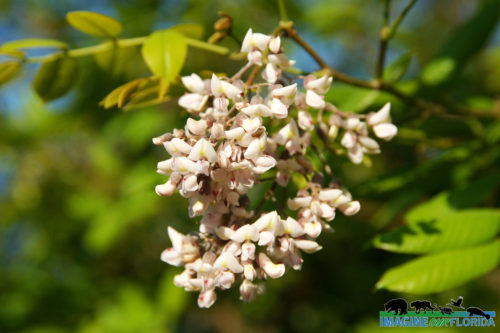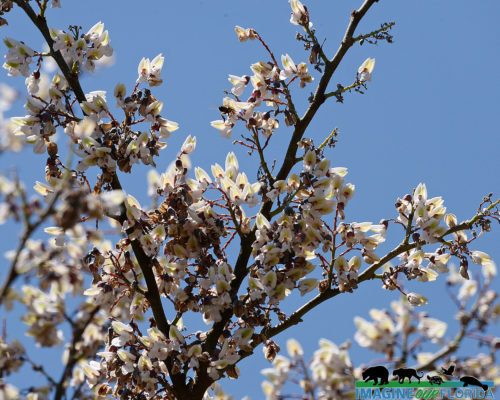



The American sycamore, Platanus occidentalis, is a beautiful tree that grows 100 – 170 feet tall with a diameter of 3-14 feet. Its bark is white at first but turns brown as it grows. As the tree ages, the scales fall away and reveal the whitish-green bark beneath. Its distinctive leaves and green globe-shaped fruit make it easy to recognize. Songbirds dine on the seeds.
Sycamore trees are native from southern Canada to northern Florida. However, the tree has been planted far south of its range in Florida. The tree pictured in these images is located at Lake Lily in Central Florida.
Sycamore trees are known for their hurricane resistance and the ability of their intertwining root system to stabilize erosion. This makes them perfect specimens to plant in parks near waterways. The trees also tolerate acidic soils and as a result, they have been planted at phosphate mining sites. Before planting this beautiful shade tree in your yard, consider the height as well as the debris from falling bark and fruit.
Photo credit: Dan Kon
Recent Comments